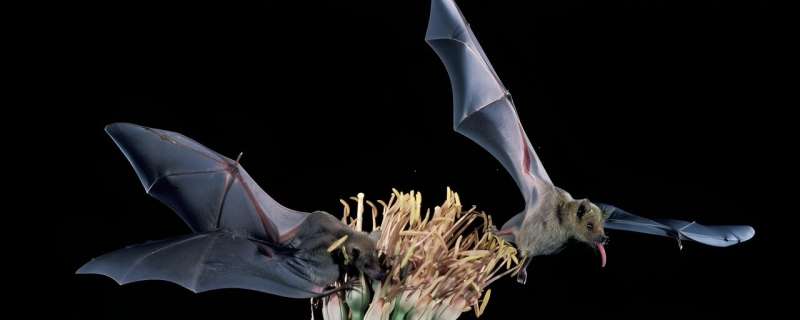This article has been reviewed according to Science X's editorial process and policies. Editors have highlighted the following attributes while ensuring the content's credibility:
fact-checked
trusted source
proofread
Sustainable practices could save Mexico's blue agave, tequila and bats

Many associate tequila with lime wedges, salt and parties. But the popular drink also has a negative impact on biodiversity, both on the blue agave from which it is made and, perhaps more unexpectedly, on bats. Both are threatened by one-sided cultivation.
Researchers at the University of Gothenburg, together with colleagues in Mexico and the U.S., have studied which measures can have a positive effect on biological diversity. The study is published in Environmental Research Communications.
The increasing global popularity of tequila has driven increasingly intensive cultivation of blue agave. Most producers work with an asexual reproduction technique that prevents the plants from flowering.
When flowering, the sugar goes to the nectar in the flowers and the plant is no longer useful for tequila production. This technique damages the agave's genetic diversity and puts the crop at long-term risk. It becomes less resistant to, for example, pests and climate change. In addition, intensive cultivation methods have removed an important source of nutrition from bats that pollinate the flowers and feed on the nectar from the agave.
Voluntary programs, such as the "bat-friendly program," allow tequila producers to label their bottles with a hologram if they allow sexual reproduction. Then the price will be slightly higher, which can be justified with the environmental label.
However, since many farmers only grow agave for sale to distilleries and do not produce tequila themselves, these hologram initiatives are not enough, farmers must also have incentives for sustainable cultivation.
In a new study, a survey method was used to find out what it takes for agave farmers to want to use methods that allow some natural agave flowering and seed production.
On average, farmers said they could consider allowing 93 plants (out of about 3,000) per hectare to flower for unspecified future yield increases, 129 plants for a subsidy of 20% relative to the investment cost, and 180 plants if the subsidy was 50% of the investment cost. According to the bat-friendly program, 150 plants per hectare are enough to secure biodiversity and food for the bats.
With sufficient financial incentives and educational resources, many farmers seem willing to invest a portion of their harvests to benefit bats while increasing agave genetic biodiversity and future viability.
The researchers also note that a collaboration between industry, consumers, decision-makers and nature conservation groups is required. The research findings suggest that environmental benefits and appropriate financial incentives could make "bat-friendly" tequila a sustainable option at the party.
More information: Irene Zapata-Morán et al, Tequila, bats, and agave farmers: towards an understanding of the right incentives to protect genetic diversity, Environmental Research Communications (2024). DOI: 10.1088/2515-7620/ad19f4
Provided by University of Gothenburg


















